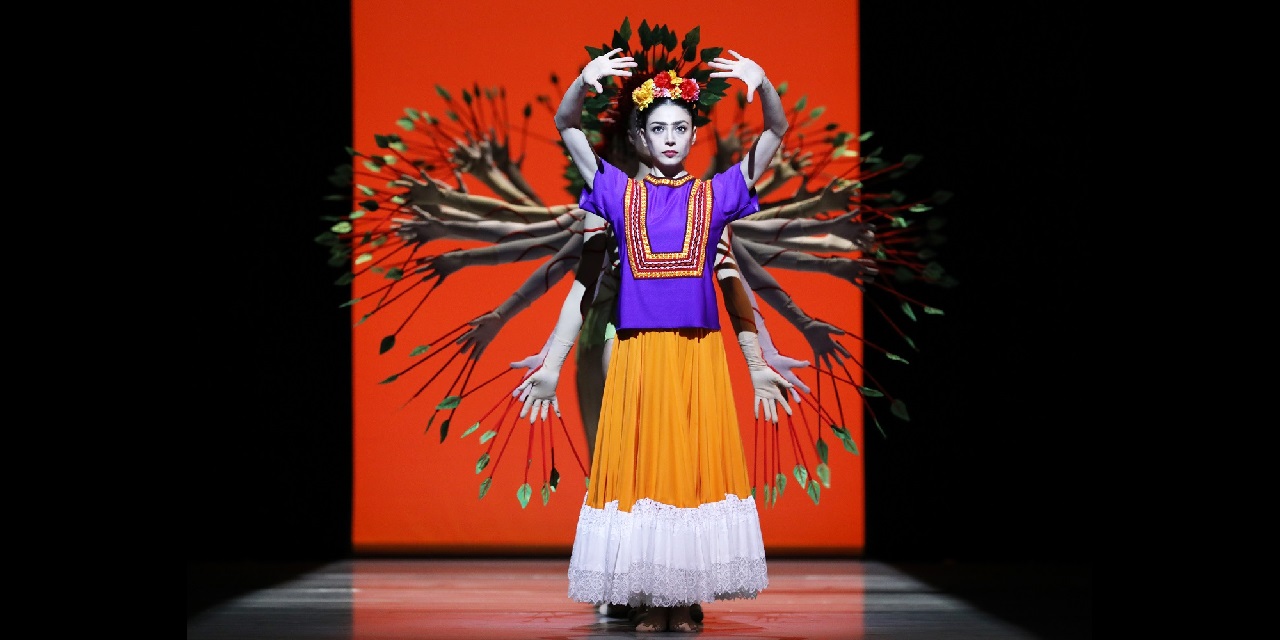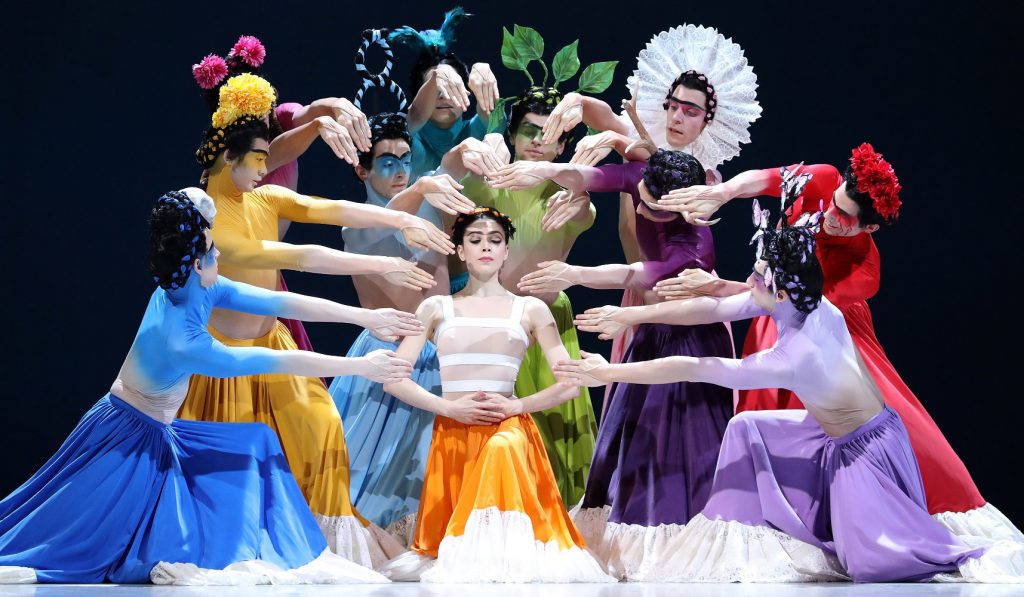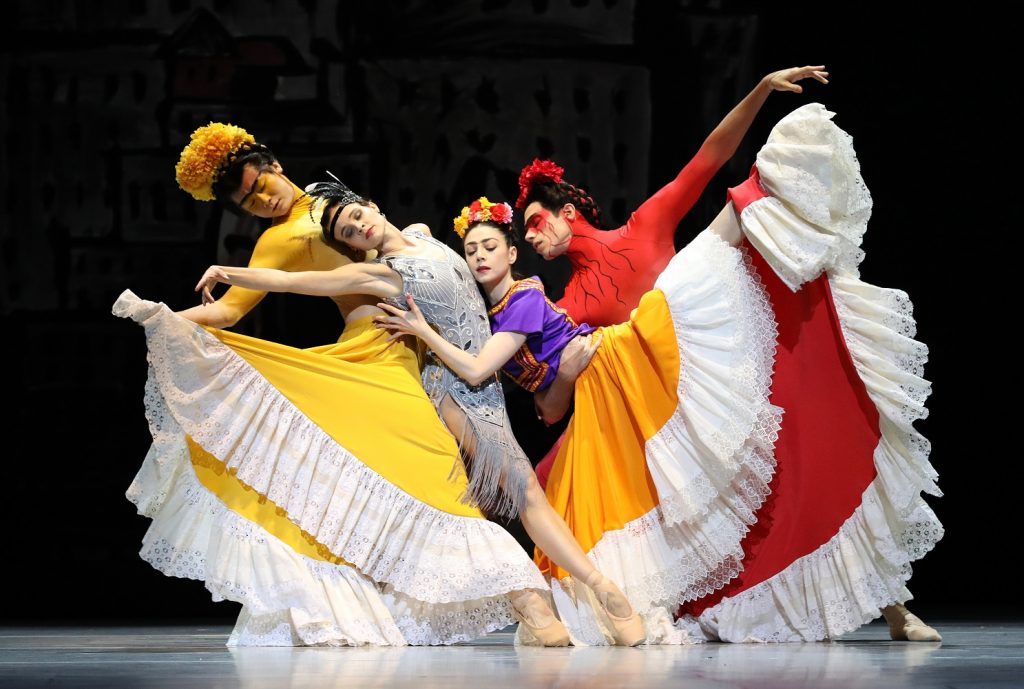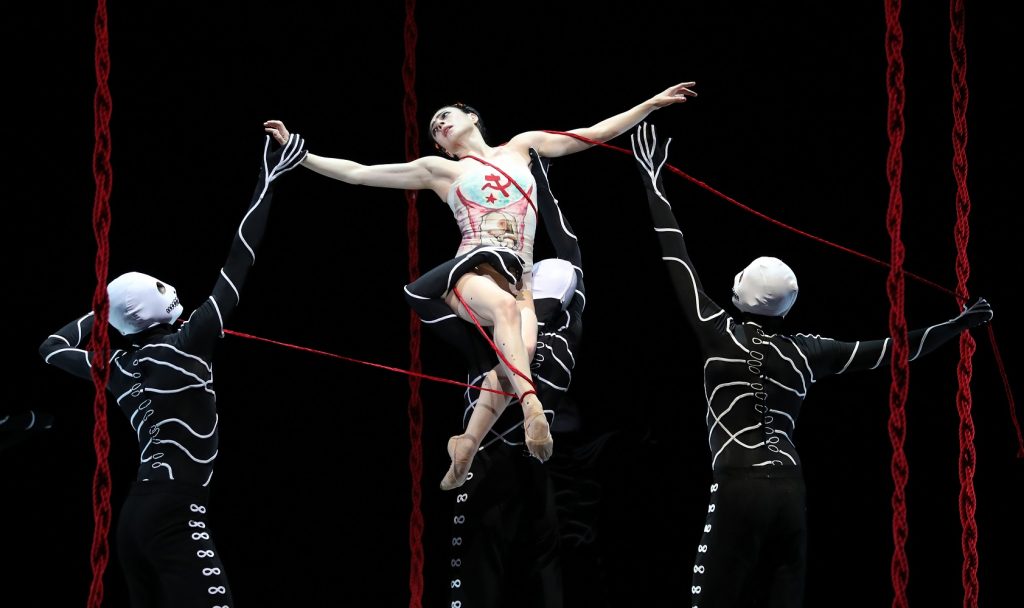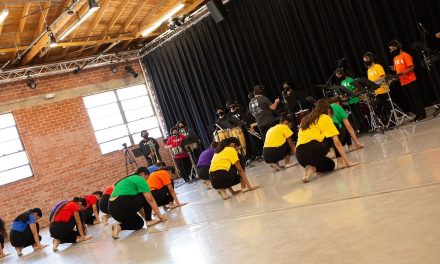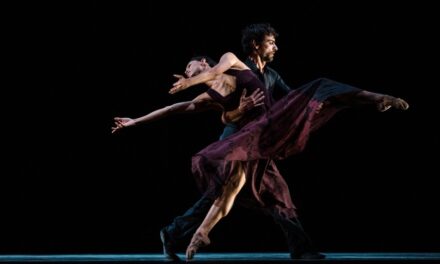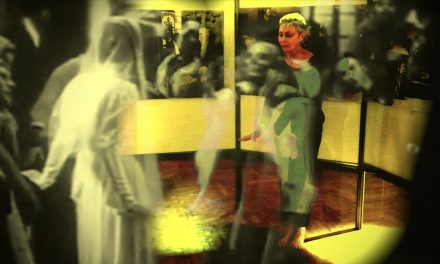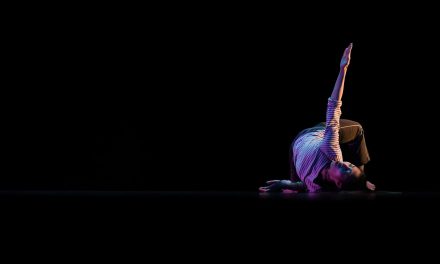On Friday, July 14, 2023 Glorya Kaufman Presents Dance at the Music Center and The Dutch National Ballet (DNB) gave a love letter to the city of Los Angeles in their presentation of FRIDA. It was one of the finest examples of heroic artistry and collaboration seen in many years, Columbian-Belgium Choreographer Annabelle Lopez Ochoa’s combination of concept and leadership can only be described as brilliant. Her team of artists brought into vivid focus the life, loves and tragedy of the legendary Mexican painter, Frida Kahlo. The DNB dancers were technically amazing with both their versatility and their ability to translate ballet to contemporary movement and drama, making exemplary the powerful undercurrents and aesthetics of Khalo’s life. It was done so boldly, yet gently, as to arrest time from the chaos of our own lives today.
Lopez Ochoa’s concept, libretto, and design created in collaboration with Dramaturg/librettist Nancy Meckler told a story of courage and art. She used the exceptional tools of the dancers, composers, and designers, mirroring the style of the“Mexicanisimo” prevalent in Kahlo’s paintings, and drawing out more than one story with each subtle powerful stroke.
Originally inspired 15 years ago by the film of Frida, Lopez Ochoa first created a 48-minute exploration of Kahlo’s life, called “Broken Wings” in 2016 for the English National Ballet. Then with the blessings of Ted Brandsen, Executive Director of DNB, and with her original team of creatives, she assembled a full length 98 minute ballet They further explored Kahlo’s relationship with lover and husband, the great muralist Diego Rivera, revealing further the complicated passions and pains of her artist life.
Masterly composer Peter Salem then added 50 additional minutes to the original score. Under the direction of conductor Matthew Rowe, Salem and Lopez Ochoa then melded to perfection the movement and music.
The Sets and Costumes, designed by Dieuweke van Reij, were a miracle of color, ranging from stark black-and-white skeletons memorializing Dia de los Muertos (day of the dead), to the breathtaking purples, oranges and yellows of Frida’s Huilpil (square cut blouse) and bright orange skirt. Renderings of richly colored flowers hung on the bias of the proscenium as a reminder of her cultural heritage and art.
The ballet begins with skeletons atop a large black cube which then opens to reveal a painting of My Family Tree. Frida, played by the remarkable Georgian dancer and actress Maia Makhateli, dances with childhood sweetheart, Alejandro, (Sem Sjouke), in playful abandon until the infamous, sudden, ill-fated and violent accident. Frida’s fight for survival becomes the subtext of her art and the throughline of her tragic yet inspiring life, a life that tragically ended at age 47. Makhateli technically and dramatically brought such soul and empathy to this role that her portrayal resonates well beyond her performance.
The use of animal entities stand out; The Deer beautifully portrayed by Erica Harwood suffers Kahlo’s loneliness, the Bird danced by Riho Sakamoto and adorned in glorious purples and blues guides the way to hope. The joyous burst of colors introduces her alter-egos, ten “Male Fridas” with Veracruzian-style full skirts and painted bodies, each wearing distinct headdresses. Some have flowers haloing their heads or wear a pair of antlers. One has a skeleton head. Each is a powerful metaphor distinctly drawn directly from Frida’s paintings. Thirteen ubiquitous male and female skeletons echo Kahlo’s future like a Greek Chorus. Mint green and red colored Butterflies of Death fan out and answer back with exquisite action to each of Frida’s movements.
Michael Mazzola’s fearless lighting made van Reij’s designs and color explode as the bodies of the dancers powerfully depicted the metaphors of Frida’s life.
Salem’s electronic score served to bridge the work, taking it from the sparse pulsating syncopation of flamenco zapateado to indigenous Mexican rhythms which incorporated native instruments. Later the cacophony of the city rang out with cymbals, whistles, electronic horns ultimately giving way to the haunting strains of the traditional La Llorona (“The Wailing Woman”) which then faded into the moaning refrains of No dejaré de quererte (“I won’t stop loving you”). It revealed the legend of a ghost woman who mourned the deaths of her children and helped build context for the audience to understand Kahlo’s miscarriage and husband, Rivera’s (James Stout), adulterous affairs, one with her sister. Her passions for both sexes were more subtly revealed. Frida Kahlo, a survivor, drew her own life with Magical Realism. Says Lopez Ochoa, she “converted her pain and sorrow into art.”
It is Impossible to criticize this work of both art and revelation. One can only tell everyone how important this work is, not only to the dance and art world, but to the world in general. It is important to watch for the ballet’s return to Los Angeles. When it does,run, do not walk, to see this amazing gift of theatre dance.
For more information about the Dutch National Ballet, please visit their website.
For more information about Glorya Kaufman Presents Dance at the Music Center, please visit their website.
Written by Joanne DiVito for LA Dance Chronicle.
Featured image: Dutch Nationale Ballet’s FRIDA – choreography by Annabelle Lopez Ochua – Photo by Hans Gerritsen

